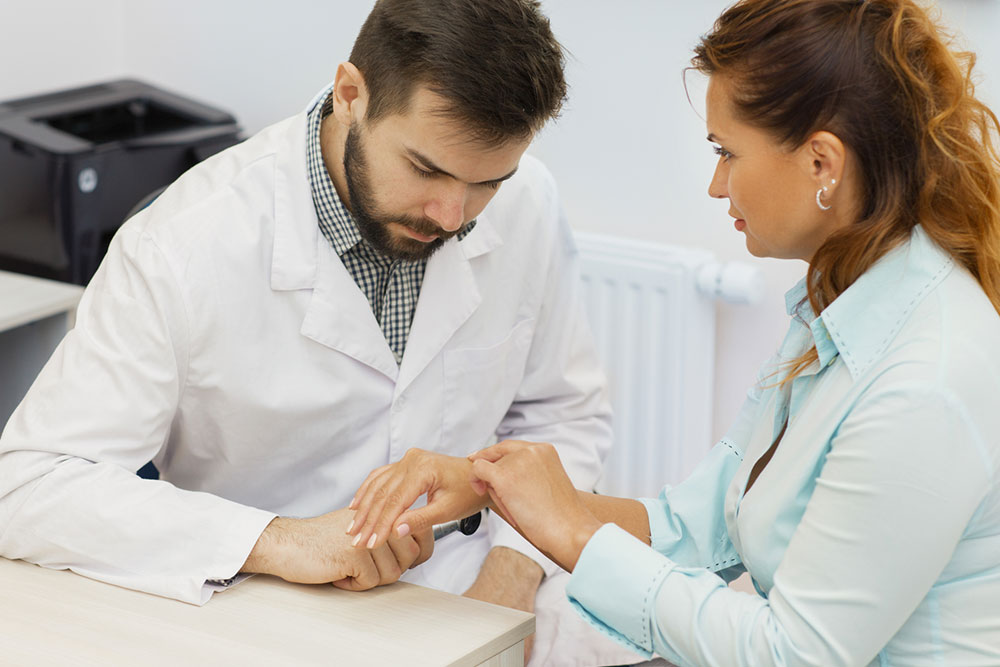Plaque psoriasis – What it looks like, management tips and more
Plaque psoriasis, also known as psoriasis vulgaris, is the most common type of the condition. According to statistics, 80% of those with psoriasis are diagnosed with plaque psoriasis. The definitive causes of the disease are still unknown; but, some risk factors may make someone more susceptible to it. Moreover, there are different types of plaque psoriasis.

Signs and symptoms
The most common sign of this type of psoriasis is the dry, thick, and raised patches on the skin, which are often observed to be covered with a silvery-white coating. This coating is referred to as a scale, which is usually extremely itchy. Apart from these common symptoms, what plaque psoriasis looks like varies according to the type, the size, and also the intensity.
Types of plaque psoriasis
Small plaque psoriasis
In this type of plaque psoriasis, the lesions are very small, just a couple of centimeters. It is possible that these lesions could separate or even merge together to become bigger. The top, flaky and crusty part is pink with finer grain. When compared to larger lesions, the crust on this is thinner. The condition may get triggered in individuals with no history of small plaque psoriasis. It can occur at any age, however, it is more common after the age of 40. This type also responds well to phototherapy treatment, so it can be managed accordingly.
Large plaque psoriasis
The lesions in this area are larger and have a clearer edge than small plaque psoriasis. The top layer is more red than pink, and the coating or scale is whitish-silvery in color. While this can also occur at any age, it most likely develops in those below 40. This type of psoriasis may be triggered due to family genetics and is passed down to generations. There are some studies that suggest that there is a link between this condition and metabolic syndrome. So, those with a combination of high cholesterol, high blood sugar, or high blood pressure may be at a higher risk of developing this disease. Unlike small plaque psoriasis, it is harder to treat this type.
Unstable plaque psoriasis
In this, the lesions lose their shape and edges over time. They also get enlarged and, in a lot of cases, join together to make even bigger patches. New plaques may also appear in this condition. Doctors tend to try to understand the way psoriasis develops and spreads and accordingly chart out a treatment plan.
Stable plaque psoriasis
This is also known as chronic plaque psoriasis, and it is the most common type of plaque psoriasis that people experience. When the first outbreak or trigger happens, the lesions usually stick around and they also reemerge on the skin. There are some common areas where these lesions appear and they include the knees, torso, elbows, scalp and also head. There may be other areas too, which can vary from person to person. Another thing to note is that plaques appear on both sides of the body. So if there is a plaque that has appeared on one elbow, it will also appear on the other one.
Plaque psoriasis on the scalp
Here are some signs to describe what plaque psoriasis looks like on the scalp.
Reddish patches start to appear on the scalp, which are thick and often itchy. They are also inflamed.
There could be dandruff-like flaking, but it is essentially the silvery white scales that are a prominent sign of psoriasis.
The scalp becomes extremely dry and it may even crack and bleed on occasions.
Experiencing temporary hair loss.
Mild to intense itchiness on the scalp.
Experiencing burning sensation or soreness on the scalp.
Similarly, plaque psoriasis on the face may also start to look like reddish patches, making the skin look dry, discolored, and scaly. It could appear on the forehead, around the eyes, cheeks, or chin. Psoriasis can also affect the skin around the mouth, the nose, and even the eyebrows. So, any change in the skin texture or redness should be shown to a dermatologist immediately to help with its management.
Management tips
There is no cure to plaque psoriasis; however, the treatment methods aim at reducing the flare ups and keeping the triggers down so as not to aggravate the symptoms further. Here are some of the management options usually advised:
Topical therapy
This involves using creams that help in reducing inflammation or slowing the growth of the skin cells. These creams can be put on right after the shower when the skin’s capacity to absorb the cream is higher, allowing it to remain moist.
Light therapy
When the rash is widespread, the doctor can suggest using ultraviolet light to treat it. This can also be done by sitting out in the sun; however, sun exposure is not recommended as a treatment since it can also increase the risk of skin cancer. Light therapy should be done in a contained environment under the supervision of a doctor.











